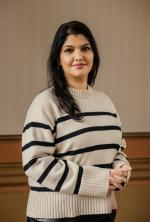
Comparative Ecologies of Conflict
The workshop application went through a rigorous peer-review process by the Life and Medical Sciences and NIAS-Lorentz (Social Sciences and Humanities) advisory boards. It received funding support from the NIOD and in-kind support from the dedicated staff at the Lorentz Center.
The workshop was distinctive and innovative in two ways. First, the organisers convened scholars and practitioners from many different disciplines, including life sciences, GIS mapping, legal studies, and social sciences and humanities. As the ecological effects of conflicts and warfare are complex, they require the integration of many disciplinary frameworks and methodologies, as well as the collaborations of scholars and practitioners alike.
Second, the workshop compared cases from several different conflicts and war theaters, with particular foci on Vietnam, Afghanistan, Iraq, and Ukraine, but during the workshop, participants also discussed the cases of Gaza, Myanmar, and Bosnia and Herzegovina. This comparative approach was generative, as participants compared the impacts of conflicts and warfare across different geopolitical, ecological, and socio-cultural contexts and timelines. It stimulated discussion of similarities and differences across these cases that would not have been visible otherwise.
Different from a regular conference or workshop where participants present a series of papers, the workshop emphasized open-endedness, with many hours of break-out group and plenary discussions that followed short input presentations from selected participants. From these discussions, among others, a few key themes/questions emerged.
The challenges of comparison
While the comparative approach is generative, it asks us to really think through what can be compared and how we can compare. As one participant, David Henig (Utrecht University), put it: ‘Some sites and concerns become paradigmatic, while others disappear or are omitted completely’. Relatedly, as our discussions made clear, the purpose of comparison is not to claim that one war, one conflict is more devastating than another. Rather, it is to learn from other cases, to see one’s blind spot, to continue holding the attention for atrocities and sufferings beyond one’s expertise, and to connect and advise one another on how to better study and address the interconnected effects of conflicts and warfare.
Interdisciplinary collaborations
During the workshop, Khuong Dinh (University of Oslo), an ecotoxicologist, raised a simple question to everyone, ‘How do you define biodiversity?’ As it turned out, everyone had a slightly different answer. While the legal scholars pulled up the definition of biodiversity in international legal conventions, the anthropologists and historians started talking about how biodiversity is vernacularly understood and how the term itself is linked to some historical relation of power and domination.
These aspects are not commonly thought about in life sciences. And when life scientists and GIS experts presented on their different experimental and visual techniques to test, trace, and reconstruct toxic drifts and ecological transformation due to conflicts and warfare, social scientists and legal scholars were enthusiastic to learn how these scientific and technological knowledges can provide better tools to understand the legacies of conflicts and warfare. These exchanges highlighted the essential need to work across disciplines (and disciplinary conventions) to fully study and document conflict ecologies.
Legal and advocacy work
The workshop also highlighted the serious limitations and challenges of the available legal frameworks to address the ecological impacts of conflict and warfare. Daniëlle Dam-de Jong (Leiden University) and Matthew Gillett (University of Essex) drew attention to the challenges of legal ‘fragmentation’ and the lack of integration among different legal frameworks, leading to acts of environmental destruction during warfare left unaccounted for. Practitioners, including Wim Zwijnenburg (PAX), reminded us also that academic research on this topic needs to be brought beyond the wall of academia to engage with policy discussions and advocacy work.
After five days of intense discussion, the workshop concluded on a high note, with many plans for future collaborations, both short- and long-term. Besides several ideas for joint publications, exhibitions, and other follow-up workshops, one important plan is to create a network focusing on ecologies of warfare and conflicts. The network will be open to scholars and practitioners, both here in the Netherlands and elsewhere.
Considering the growing overlapping interests among many colleagues at the NIOD and Utrecht University, there is now a discussion underway to further the collaboration between them. One concrete development is the recently awarded Incubator Grant from Utrecht University’s Pathways to Sustainability Programme to Thijs Jeursen and Hayal Akarsu (Utrecht University), who were both participants in the Lorentz Workshop. Dat Nguyen (NIOD) was listed as one of the external collaborators for this grant.
If you are interested to join the developing network, please get in touch with Dat Nguyen.


